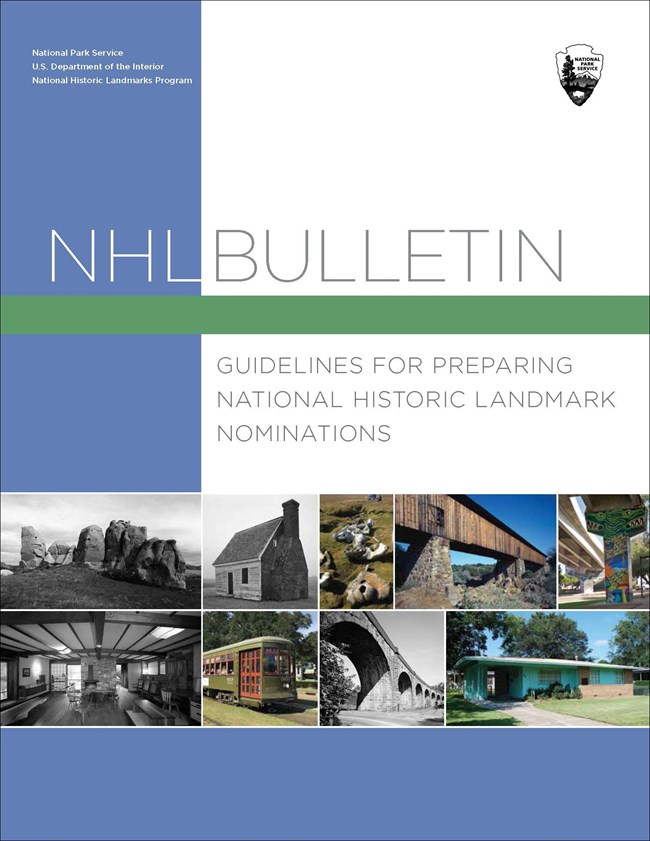The 2023 NHL Bulletin replaces the 1999 version (National Register Bulletin: How to Prepare National Historic Landmark Nominations) as the core guidance for understanding NHLs and the process by which they are identified, nominated, and designated.
NHL Bulletin: Guidelines for Preparing National Historic Landmark Nominations (2023)
PDF (full document)

Contents
Acknowledgements
Preface
Chapter 1 – Introduction
Basic Definitions.....9
Qualitative Framework.....11
The Benefits of NHL Designation.....12
The Limits of NHL Designation.....15
Chapter 2 – History
History of the NHL Program.....16
Tracking Change through Theme Studies.....18
The NHL Program and the National Register of Historic Places.....20
Chapter 3 – Process
Letter of Inquiry and Preliminary Evaluation.....22
Preparing the Nomination.....25
Submission, Review, and Revision of the Nomination.....26
NHL Committee Meeting and Review.....27
National Park System Advisory Board Meeting and Review.....28
Secretary of the Interior Review and Designation.....29
Chapter 4 – National Significance
National Significance and Place.....32
Theme Studies, Special Studies, and Updated Documentation.....33
Exploring the National Significance of a Place.....37
Period of National Significance.....39
Chapter 5 – Criteria
NHL Criteria.....41
NHL Criteria Exceptions.....48
Chapter 6 – Integrity
The Seven Aspects of Integrity.....57
Understanding Integrity.....64
Influences on Assessment.....68
Integrity and the NHL Criteria.....70
Chapter 7 – Withdrawal of Designation
Chapter 8 – Comparative Analysis
Identification of Comparable Properties.....79
Chapter 9 – Nomination
The NHL Nomination Form.....84
Section 1: Name and Location of Property.....86
Section 2: Significance Data.....88
Section 3: Withholding Sensitive Information.....89
Section 4: Geographical Data.....90
Section 5: Significance Statement and Discussion.....98
Section 6: Property Description and Statement of Integrity.....101
Section 7: Bibliographical References and Other Documentation.....116
Photographs, Maps, Plans, and Historic Images.....117
Notes
Selected Bibliography
Last updated: January 26, 2024
